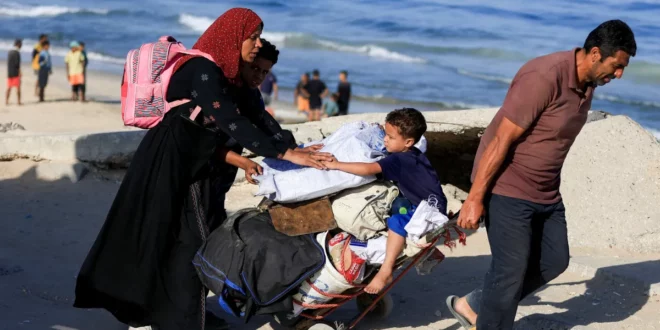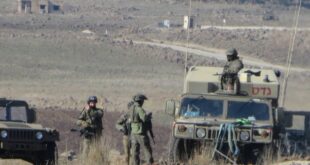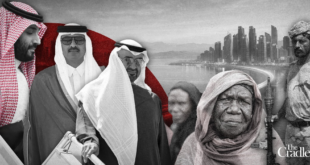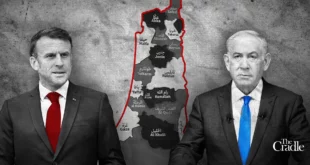Forging a durable, just, and comprehensive peace in the Middle East should mimic the construction of a bridge. On one side, the architects of peace must build forward from where they stand today: negotiate a cease-fire agreement, uphold it, and point it toward a lasting settlement. On the opposite side, others must define the contours of that permanent settlement and then reverse engineer it to link up with current efforts.
If they follow this blueprint, those working on a longer-term vision for peace can do so unaffected by whatever political upheavals or swirling hatreds arise in the near term. Hamas’s release of all surviving Israeli hostages and Israel’s pullback within Gaza and the ending of its horrific campaign in the territory (which a United Nations commission of inquiry and many other experts have described as genocide) offer a desperately needed respite. Credit must also be given to U.S. President Donald Trump and his administration for helping secure the nascent truce. But this cease-fire will only be a pause, an interruption in a long and dismal story, if it is not eventually connected to a future political settlement that accommodates the legitimate aspirations of both the Israelis and the Palestinians: two states. Such an arrangement may seem distant, but its pursuit is not folly. Determining in detail what two states living side-by-side in peace and harmony would actually look like need not depend on the prevailing public moods of today. Planners can hammer out the details now that will inspire widespread acceptance in the future.
Sadly, when it comes to Middle East peace, the tendency has long been to work on overcoming present and ephemeral challenges with no clear understanding of the final destination. This was the approach taken with the Oslo accords in the 1990s and the 2003 Roadmap for Peace in the Middle East. Today, many observers are again fixated on the immediate conditions: how to seize on Trump’s 20-point peace initiative and expand the first phase of the cease-fire to more broadly stabilize Gaza.
Although stopping the suffering in Gaza, together with securing the release of hostages and prisoners, is an urgent and necessary goal, it remains only another form of cease-fire—not a lasting peace. Trump’s framework, at least in its current form, touches on the possibility of Palestinian statehood, without further elaboration. The Palestinians and the Arab states, desperate to see an end to the misery in Gaza, have accepted the plan. But it is hard to imagine they can sustain their support for the plan in the longer term without a clear U.S. commitment to two states. This was, after all, the position they expressed when backing the recent French and Saudi–led New York Declaration, which offered a road map to a two-state solution and was endorsed by the UN General Assembly in September.
To be sure, Israeli Prime Minister Benjamin Netanyahu and his allies remain entirely opposed to the creation of a Palestinian state—and indeed have sought to foreclose the possibility of its founding. But that position is not written in stone; public attitudes and political pressures shift and change, and Israeli leaders may think differently in the future. In the meantime, those Israelis and Palestinians who do want to build a two-state solution should press ahead. Fortunately, Israeli and Palestinian civil society groups have made creditable efforts in recent years to paint a more detailed picture of peace.
There are now three principal variations of a plausible two-state solution. One is the fairly conventional proposal put forward by former Israeli Prime Minister Ehud Olmert and former Palestinian Foreign Minister Nasser al-Kidwa that picks up where negotiators left off nearly two decades ago. The other two argue for the creation of confederated entities consisting of two states enmeshed in different ways: the “Holy Land Confederation” advanced by the former Israeli minister Yossi Beilin and the Palestinian lawyer Hiba Husseini, and “A Land For All: Two-States, One Homeland,” devised over years of collaborative consultations among a wide variety of Israeli and Palestinian civil society leaders and now helmed by the activists May Pundak and Rula Hardal. These plans for a confederation search for innovative ways to overcome the obstacles that have made reaching a lasting peace so difficult in the past. Such creative, long-term thinking is critical. As Palestinians seek to pick up the pieces of their lives in Gaza and as the last Israeli hostages return home, it is essential to begin constructing the other side of the bridge, giving full weight to the pragmatic proposals put forward by Israelis and Palestinians for a credible and durable two-state solution.
FALSE STARTS
Understanding these initiatives requires first looking at the past three decades of efforts toward a two-state solution. Through a series of bilateral discussions beginning with the Oslo process, in 1993, Israelis and Palestinians settled on a gradual approach to peacemaking that would culminate in an agreement on five principal “final status issues”: borders, Jewish settlements, Jerusalem, the right of Palestinian refugees to return, and security. These were issues thought to be so difficult that they were better left until the very end, when a sufficient store of trust would have accumulated between the two sides.
The approach could have worked had there been a mechanism in place that forced the two parties to stick to agreed timelines no matter the circumstances—and had those circumstances not proved so volatile. Attacks by both Israeli right-wing extremists and Hamas battered the process almost from the beginning. In 1994, an Israeli American extremist carried out a mass shooting of Palestinians at the Ibrahimi Mosque in Hebron. The following year, an Israeli extremist assassinated Israeli Prime Minister Yitzhak Rabin. Months later, Israeli forces killed Yahya Ayyash, the commander of Hamas, and the group responded by launching a series of devastating bus bombings. All these attacks took their toll on the peace process, and the timelines soon fell by the wayside. The process took another downturn in 1996, following Netanyahu’s election as prime minister—he had campaigned against Oslo. Neither the Israelis nor the Palestinians had any clearer sense of how the process would resolve the important final status issues. And all the while, the construction of Jewish settlements continued apace in the West Bank and Gaza.
The Oslo process briefly regained momentum in 1999, after Ehud Barak became Israel’s prime minister. Barak tried to rescue Oslo by moving straight to final status talks. This attempt also failed. Soon after the Camp David talks ended, in 2000, Palestinian leader Yasser Arafat was simply unwilling to accept all of Barak’s peace proposal—although some have attributed this decision less to Arafat’s intransigence than to a rushed negotiation and poor personal chemistry between the two men.
Significantly, however, at the end of the Camp David talks, U.S. President Bill Clinton outlined his suggested parameters for peace, including the idea of territorial swaps. His argument was simple: if the border separating Israel from the Palestinian territories could be agreed on precisely, the thorny issue of settlements would also be resolved. Under his proposal, the states would be demarcated by the Green Line (the borders before the Six Day War in 1967, in which Israel gained control of the West Bank and Gaza), but with some adjustments. The Palestinians would cede four to six percent of the West Bank to Israel with no territorial compensation, and a further one to three percent of all their territory in exchange for land Israel would hand over from elsewhere. By modifying the border this way, Israel would retain control over 80 percent of the settler population. The settlers living on land that remained in the Palestinian territories would be relocated back to Israel.
The proposal of land swaps became the principal key used in attempts to unlock other issues. Over the next few years, land swaps found their way into further plans to reach a final status agreement, such as The People’s Voice initiative in July 2002 and, significantly, the Geneva accord of December 2003. The latter document, drafted by civil society representatives from both sides, offered a model Israeli-Palestinian peace agreement and outline of a two-state solution. The accord did not, however, offer much detail on how the land swaps would work.
Despite these efforts to advance a final peace agreement, diplomacy was overtaken by escalating violence, deepening mistrust, and diverging priorities among Israeli, Palestinian, and regional actors. By 2003, relations between Israelis and Palestinians had reached a new low. The second intifada, ignited by the provocative visit of the Israeli politician (and future prime minister) Ariel Sharon to the Holy Esplanade in Jerusalem in September 2000, still burned. Two important peace initiatives then failed to secure Israel’s backing: the Arab Peace Initiative in March 2002, spearheaded by Crown Prince Abdullah of Saudi Arabia, and the Roadmap for Peace presented by the Quartet on the Middle East (consisting of Russia, the United States, the European Union, and the United Nations) in late April 2003. These initiatives had helped define how a future two-state peace would be accepted within the region; all the Arab states would recognize Israel once the latter ended its occupation of the Palestinian territories. They also demonstrated the international community’s desire to press the two sides into an agreement. Yet Israel remained unconvinced about the Arab Peace Initiative and responded to the road map with 14 points of its own. Sharon’s government argued that nothing could be done until the intifada stopped, even though many countries believed an end to the intifada and a negotiated settlement based on two states could be pursued in parallel.
The possibility of land swaps was not picked up again until 2006, after the intifada had subsided and both camps had new leaders: Olmert, who became prime minister of Israel in 2006, and Mahmoud Abbas, who was elected president of the Palestinian Authority in 2005. Yet they struggled to agree on the precise percentage of land that would be exchanged. After two years of negotiations, both sides were stuck somewhere between four and six percent. Those exchanges were the last time serious face-to-face negotiations on final status issues took place.
PAST AS PROLOGUE
Nearly two decades later, Olmert, now a private citizen of Israel, is again behind a two-state initiative, along with Kidwa, a highly regarded former foreign minister of the Palestinian Authority. The Olmert-Kidwa proposal resumes right where the Olmert-Abbas talks ended in 2008 but adds new and creative language on Gaza and Jerusalem. Olmert and Kidwa have now suggested a figure of 4.4 percent for the territorial swap, which would include a corridor to be created between Gaza and the West Bank.
Unique among the visions for a two-state solution, although now resembling aspects of Trump’s 20-point plan, this initiative also focuses on the creation of a technocratic governance structure for Gaza. Olmert and Kidwa refer to this structure as the Council of Commissioners and, unlike the similar body in the Trump plan, it would be linked to the Council of Ministers of the Palestinian Authority.
A cease-fire is not a lasting peace.
General elections would be held within two to three years of the council’s establishment. A “temporary Arab security presence” would be deployed to Gaza to work with a Palestinian security force accountable to the Council of Commissioners. This Arab force would fill the security gap and prevent attacks against Israel. Moreover, a donor conference would be convened to raise funds to rebuild Gaza.
Jerusalem would be divided into two capitals along the Green Line, with the Jewish neighborhoods built on the Palestinian side of the city after June 1967 included in the land swap. The Old City would be administered by a trusteeship of five states, including Israel and a Palestinian state, and governed by rules established by the UN Security Council. The plan also recognizes the special role of the king of Jordan in the custodianship of the Islamic holy sites in Jerusalem. No state would have exclusive sovereignty over the area in and around Jerusalem known as the Holy Basin, and all worshipers would have access to the area’s sacred sites without limitations. This Palestinian state would be demilitarized except for internal security purposes.
The Olmert-Kidwa plan does not offer definitive recommendations for all the final status issues. The questions of settlers, settlements, refugees, and additional security measures, including the possible stationing of international troops along the Jordan River, would be left to future negotiations.
A CONFEDERATION IN THE HOLY LAND
A second, arguably more creative effort has been promoted by the former Israeli minister and politician Yossi Beilin—one of the original architects of the Oslo process and an experienced negotiator who was also involved with the 2000 Camp David summit, the 2001 Taba talks between Israel and the Palestinian Authority, and the 2003 Geneva accord. Since 2021, he and the Palestinian lawyer Hiba Husseini have been advocating for an arrangement dubbed the Holy Land Confederation, or the HLC. The HLC would be a confederation of two states based on a territorial swap limited to around 2.5 percent of the overall territory. Unlike the Olmert-Kidwa proposal, this one focuses on the structure of the two states and ventures some solutions to tricky final status issues. Its principal departure from the more familiar formulation of the Olmert-Kidwa proposal is the still novel idea of permanent residency for Israeli settlers and Palestinian refugees: Israelis whose settlements are not included in the land swap could remain in their homes as permanent residents of a future Palestine, and an equal number of Palestinian refugees could seek permanent resident status in Israel. The proposal examines in some detail the possible types of legal jurisdiction that would apply to these permanent residents.
Through introducing the notion of permanent residency, Beilin and Husseini are attempting to sort out borders and the question of settlements more or less in one go, much as the proposed land swaps of the Clinton era tried to do. They are trying to resolve the question of where Palestinian refugees can go by allowing for more than the token number of returnees proposed under Oslo. At the same time, permanent residency would obviate the need for a large forcible transfer of settlers back to Israel—and all the attendant chaos that would come with such upheaval. But both sides would have to negotiate a precise timetable that would first allow a Palestinian state to become fully functional and then for the confederation to come into being.
Like the initiative from Olmert and Kidwa, the HLC proposal supports dividing Jerusalem into two capitals. But rather than a five-state trusteeship to supervise the Holy Basin, Beilin and Husseini favor a joint Israeli-Palestinian committee, which would also be charged with municipal planning. Although they advocate for Jerusalem, in its entirety, to eventually become a fully open city, they argue that the Old City should be made open as soon as the confederation is created. They also propose a number of confederal institutions, including a human rights commission. On security, the proposal advocates for both sides to refrain from military cooperation with states or nonstate entities hostile to the other side, without defining what that would mean in the context of a comprehensive peace agreement.
One potential vulnerability is the HLC’s “exit clause,” which permits either state to leave the confederation. That possibility may encourage forces within both camps to push against the arrangement, much as those unhappy with the Oslo accords helped scupper the peace process. Some politicians will be opposed to the confederation from the start. Others will take advantage of inevitable teething issues to win popular support by attacking the HLC. If there is an exit clause, they will likely seek to invoke it, drawing on support from outside powers. The framers of the HLC should excise this exit clause or at least set a lengthy period—say, 50 years—before any withdrawal from the confederation is permitted.
A LAND FOR ALL
The third proposal—A Land for All (ALFA)—was conceived in 2012 and is being led by the Israeli and Palestinian grassroots activists May Pundak and Rula Hardal. It takes the idea of the HLC even further. It, too, would fix the border between Israel and Palestine along the Green Line but, critically, with no variation. Instead of trying to sketch a series of land swaps, it centers entirely on permanent residency. Under the ALFA proposal, there would be no limitations on the numbers of Israelis or Palestinians who could seek permanent residency in the other state. But it does recognize the need for a phased approach to avoid inundating Israel with returning Palestinian refugees or the new state of Palestine with large numbers of Israelis wanting to relocate beyond the former settlements. The key to ALFA is its emphasis on freedom of movement for both peoples and the right of both peoples to settle in either state, not as citizens but as residents who can vote in local elections. The logic behind this is simple: Israelis and Palestinians both feel a deep emotional connection to all the land, from the river to the sea, and that principle must be baked into any durable and just peace.
On Jerusalem, ALFA has much in common with the other initiatives. Jerusalem would be the capital of both states, with freedom of movement throughout and shared management of the Old City, likely with international involvement. Rather than have the city divided by fences or walls, ALFA proposes to keep Jerusalem “whole, open, and shared.” Although Jerusalem would serve as two capitals, Israel and the Palestinian state would also delegate powers to a special body that governs the entire city—either as a single joint local government or as two municipalities under the confederal umbrella.
On security, again ALFA is similar to the other proposals, recognizing that each state needs to police its own sovereign territory. Unlike the other plans, it calls for reciprocal and agreed terms for the partial demilitarization of both states. It expressly opposes the unilateral deployment of foreign forces without the consent of both parties and supports a joint Israeli-Palestinian border force.
The biggest threats to this plan, as with the other proposals and past peace efforts, would likely come from within, from those opposed to any form of accommodation. To prevent internal spoilers from derailing a two-state solution, architects of the agreement should craft robust dispute resolution mechanisms, a strong economic development strategy, supported by well-designed laws on both sides, and sensible decisions on education, language, and all civil rights matters. The final line of defense would have to be a regional security arrangement with credible guarantees for lasting stability; none of these proposals offer a vision for such an arrangement.
Compared with the HLC proposal, ALFA offers fewer details on confederal institutions. It does, however, provide a detailed plan on human rights. It emphasizes the importance of both sides embracing the principle of shared, universal human rights. Unlike the HLC’s proposal for a human rights commission, ALFA stresses the need for an appellate body, a supreme court of human rights, to hear cases filed after decisions are handed down in the courts of either country. As a former UN human rights chief, I fully support this approach.
Ultimately, ALFA is the most imaginative of these proposals in that it breaks from existing approaches and paradigms. There is a practical dimension to its idealistic ambition: by not entertaining land swaps of any sort, ALFA ensures that all settlements would fall under Palestinian sovereignty, thereby circumventing an issue that has hampered every attempt at Middle East peace to date. But all three proposals have merit. They offer real solutions to permanently ending years of extreme violence and oppression.
REACHING THE OTHER SIDE
Without the work of such visionaries, it would be difficult to define a future for the Middle East. Although Netanyahu may have welcomed the Trump plan and accepted a reference to potential Palestinian statehood, it is not altogether clear what he actually wants for his country and the region. Beyond managing what is clearly an untenable status quo, he seems to have no plan other than that of his far‑right coalition, which seeks a “Greater Israel” that would entail the annihilation of Palestinians in Gaza and the West Bank. That course is not only both appalling and unviable but is also rejected by the majority of Israelis. To realize peace in Gaza beyond short-term cease-fires, there must be a destination for the permanent end to this conflict.
A conflict as entrenched and violent as the one in the Middle East naturally breeds skepticism and cynicism. Yet there are real reasons for cautious optimism. Regional and international actors are assiduously pursuing avenues to reduce violence and lay the groundwork for lasting peace: Qatar, in coordination with Egypt and the United States, has helped shepherd parties toward a Gaza cease-fire; Egypt continues to lead Arab efforts in collaboration with neighboring states, particularly Jordan; and Saudi Arabia, along with France and Norway, has marshaled global diplomatic and financial support for a viable two-state solution. Increasingly, countries around the world are recognizing Palestinian statehood, signaling growing international concern and engagement.
This is where the creative and pragmatic proposals developed by Israelis and Palestinians—the Olmert-Kidwa plan, the Holy Land Confederation, and ALFA—become indispensable. They offer realistic pathways for a lasting two-state solution, addressing a battery of complex issues. These visions are not abstract exercises; they represent the only pragmatic way forward to end the conflict and ensure regional stability. To be sure, sustaining momentum on short-term measures—whether reducing hostilities, facilitating humanitarian support, or coordinating regional diplomatic pressure—is essential. But these actions will succeed only if they are explicitly linked to the construction of the other side of the bridge, a long-term solution for a just and enduring peace between the Israelis and the Palestinians. There is simply no other way.
 Eurasia Press & News
Eurasia Press & News



